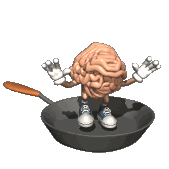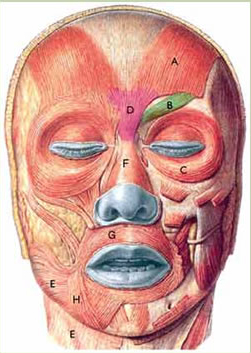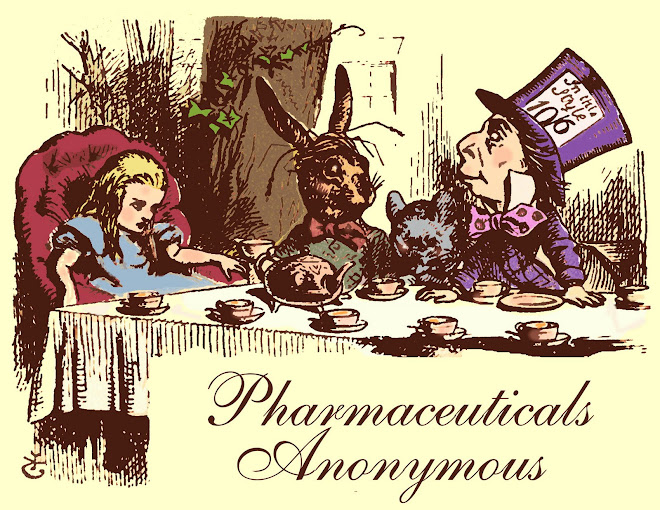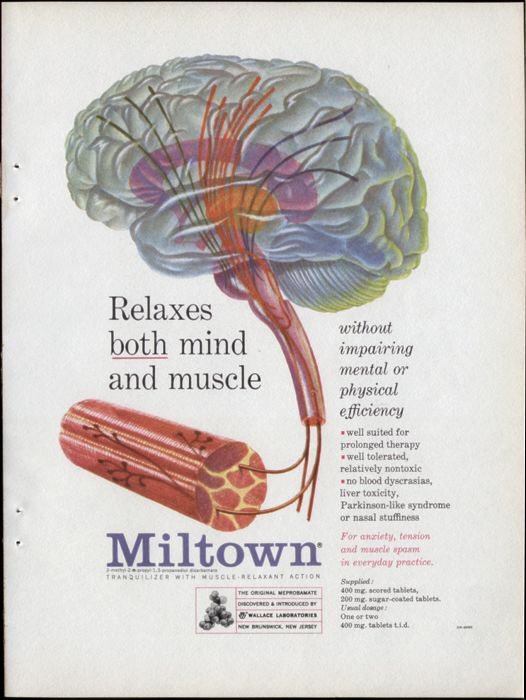Monday, April 28, 2008
New York Times: Doctors should be banned from taking gifts from Pharma
Group Urges Ban on Medical Giveaways
By GARDINER HARRIS
Drug and medical device companies should be banned from offering free food, gifts, travel and ghost-writing services to doctors, staff members and students in all 129 of the nation’s medical colleges, an influential college association has concluded.
The proposed ban is the result of a two-year effort by the group, the Association of American Medical Colleges, to create a model policy governing interactions between the schools and industry. While schools can ignore the association’s advice, most follow its recommendations.
Rob Restuccia, executive director of the Prescription Project, a nonprofit group dedicated to eliminating conflicts of interest in medicine, said the report would transform medical education.
“Most medical schools do not have strong conflict-of-interest policies, and this report will change that,” Mr. Restuccia said.
The rules would apply only to medical schools, but they could have enormous influence across medicine, said Dr. David Rothman, president of the Institute on Medicine as a Profession at Columbia University.
“We’re hoping the example set by academic medical colleges will be contagious,” Dr. Rothman said.
Drug companies spend billions wooing doctors — more than they spend on research or consumer advertising. Medical schools, packed with prominent professors and impressionable trainees, are particularly attractive marketing targets.
So companies have for decades provided faculty and students free food and gifts, offered lucrative consulting arrangements to top-notch teachers and even ghost-wrote research papers for busy professors.
Read the article here
Sunday, April 27, 2008
Gardasil in UK


A trial of the new cervical cancer vaccine programme for schoolgirls across the country has encountered opposition from parents, with 20% refusing to give permission for their daughters to have the jab.
A third of those who gave a reason for refusal said they were worried about the long-term safety, on which there is no data. But some may have concerns that allowing vaccination may promote promiscuity, because the cancer-causing virus which the vaccination targets is passed on in sexual intercourse. Two schools declined to take part for religious reasons.
The findings from the pilot study, involving 2,817 girls aged 12 and 13 in year 8 at 36 secondary schools in Greater Manchester, are published by the British Medical Journal today. In an accompanying editorial, Professor Jo Waller and Dr Jane Wardle from the department of epidemiology and public health at University College London say 12- and 13-year-old girls whose parents refuse consent may be competent to decide for themselves.
Article here
Aside from its ALUMINUM adjuvant, Gardasil has a few other teeny problems.
You can get these HPV warts from non-intimate activities, like sharing a towel at a pool.
Many Americans are already infected with HPV according to the Washinton Post. Is the sky falling? No. It isn't even a blip on the public health screen. Most people who get these warts get over them without ever knowing they had them. In Canada, a country of 30 million, there were a mere 400 mortalities from cervical cancer last year.
$o, what's this all about? Follow the money. Just like Bush's attempt to screen the entire US population for mental illness (TMAP), this story has links to Texas. Read about Texas' Governor Goodhair's good deeds for Merck here.
Saturday, April 26, 2008
Pauling, 1968: Small substances may control sanity
Vol. 160. no. 3825, pp. 265 - 271
DOI: 10.1126/science.160.3825.265
Orthomolecular Psychiatry
VARYING THE CONCENTRATIONS OF SUBSTANCES NORMALLY PRESENT IN THE HUMAN BODY MAY CONTROL MENTAL DISEASE
Linus Pauling
1 The University of California, San Diego, P.O. Box 109, La Jolla, California 92037
The functioning of the brain is affected by the molecular concentrations of many substances that are normally present in the brain. The optimum concentrations of these substances for a person may differ greatly from the concentrations provided by his normal diet and genetic machinery. Biochemical and genetic arguments support the idea that orthomolecular therapy, the provision for the individual person of the optimum concentrations of important normal constituents of the brain, may be the preferred treatment for many mentally ill patients. Mental symptoms of avitaminosis sometimes are observed long before any physical symptoms appear. It is likely that the brain is more sensitive to changes in concentration of vital substances than are other organs and tissues. Moreover, there is the possibility that for some persons the cerebrospinal concentration of a vital substance may be grossly low at the same time that the concentration in the blood and lymph is essentially normal. A physiological abnormality such as decreased permeability of the blood-brain barrier for the vital substance or increased rate of metabolism of the substance in the brain may lead to a cerebral deficiency and to a mental disease. Diseases of this sort may be called localized cerebral deficiency diseases. It is suggested that the genes responsible for abnormalities (deficiencies) in the concentration of vital substances in the brain may be responsible for increased penetrance of the postulated gene for schizophrenia, and that the so-called gene for schizophrenia may itself be a gene that leads to a localized cerebral deficiency in one or more vital substances.
When will we act on this information?
Friday, April 25, 2008
Mr. Bean and Nutrition for the Brain
Video: Mr. Bean Meets The Queen
"Mr. Bean", a character created by British comedian Rowan Atkinson, lends a name to a memorable mental health site by Australian Walter Last. Visit MR. BEAN where you can enjoy Last's clear and thought-provoking writing about improving and healing your brain with nutrition.
Thursday, April 24, 2008
Video: Biological Causes of Depression
Pharma 2020: The Vision~Which Path Will You Take?
By PriceWaterhouseCoopers.
By 2020, the E7 could account for as much as one-fifth of global sales.
Yet the biopharmaceutical sector (Pharma) will find it hard to capitalize on these opportunities unless it can change the way in which it functions.
Its core problem is lack of productivity in the lab. Several external factors have arguably exacerbated the industry’s difficulties, but the inescapable truth is that it now spends far more on research and development (R&D) and produces far fewer new molecules than it did 20 years ago.
The shortage of good medicines in the pipeline underlies many of the other challenges Pharma faces, including its increasing expenditure on sales and marketing, deteriorating financial performance and damaged reputation.
At the start of the decade, many people thought that science would come to the industry’s rescue and that molecular genetics would reveal numerous new biological targets, but the human genome has proved even more complex than anyone first envisaged.
It is no longer the speed at which scientific knowledge is advancing so much as it is the healthcare agenda that is dictating how Pharma evolves.
The first part of our report highlights a number of issues that will have a major bearing on the industry over the next 13 years. The second part covers the changes we believe will best help pharmaceutical companies:
~operate in this new milieu
~realise the potential the future holds; and
~enhance the value they provide shareholders and society alike.
Healthy habits and fab jabs!
The vaccines sector is growing rapidly, then; there are now 245 pure vaccines and 11 combination vaccines in clinical development and some industry experts estimate
that the market could be worth as much as $42 billion by 2015. Five major players –
- GlaxoSmithKline
- Merck
- Sanofi-Aventis
- Wyeth
- Novartis (via its acquisition of Chiron)
But oncology is by far the most significant new therapeutic area; according to IMS, there are 90 therapeutic (as distinct from prophylactic) vaccines for cancer in the pipeline, and more than two-thirds of them are in late-stage development.
However, conventional vaccines are very different from other therapies in several respects. They usually require very large safety and efficacy trials using healthy volunteers; long-term surveillance to ensure the persistence of the antibodies they induce; and strict control of live materials in the manufacturing process (although new technologies are emerging, which should help to stabilise production).
More importantly still, any therapy aimed at the healthy carries a higher risk than one that treats the sick. This is not an insuperable obstacle, but it does suggest that Pharma may have to assume some
sort of underwriting role. It could, for example, guarantee to cover the medical costs of any patient
unfortunate enough to develop a disease against which he or she has been inoculated, where the patient has shown signs of a positive immune response after vaccination and the normal period of immunity still applies, in much the same way that insurance companies provide cover against accidents and thefts.
Unless Pharma improves its
reputation, its political, commercial
and clinical credibility will be
eroded, with serious implications
for its future success."
You think?!?!?! Let's HOPE?!?!?
And what's with calling vaccinations "Fab Jabs"?
They're acting as if it's CHIC to get a vaccination!
Anyway, now we know where 'they' plan on going in the future.
It's like a road map to the insane asylum....egads.
Saturday, April 19, 2008
25 Shocking Facts About the Pharmaceutical Industry
 Image: Valley of the Dolls, movie, 1960's
Image: Valley of the Dolls, movie, 1960'sFrom the Nursing Online Education Database
25 Shocking Facts About the Pharmaceutical Industry
By Laura Milligan
Researching and snagging an adequate, wallet-friendly health care plan is tough these days, despite its high-profile presence in political debates. A large part of the controversy over expensive health costs stems from criticism of high-priced medications marketed by powerful pharmaceutical companies. From Medicare fraud to CEOs worth billions of dollars, big drug companies are accused of putting profits above patients, spinning false PR campaigns and more. We've uncovered 25 of the most shocking facts about the pharmaceutical industry in this list.
Some excerpts:
The price of drugs is increasing faster than anything else a patient pays for: Marcia Angell writes in her book The Truth About Drug Companies that "drugs are the fastest-growing part of the health care bill which itself is rising at an alarming rate."
Your doctor may have an ulterior motive behind your prescription: In 2007, the St. Petersburg Times reported that drug reps often give gifts to convince doctors to prescribe the medications that they represent.
Pharmaceutical companies spend more on marketing than research: According to ScienceDaily, a "new study by two York University researchers estimates the U.S. pharmaceutical industry spends almost twice as much on promotion as it does on research and development."
Brand name meds often have a 1,000% mark-up price: Many Americans are aware that brand name prescriptions cost more than generic meds.
Read the rest here
Friday, April 18, 2008
Thomas Szasz on NAMI

While we don't agree with Thomas Szasz that mental illness is a myth, we applaud his stance on human freedom and dignity. We were pleased to see him expose misdeeds of NAMI here:
The National Alliance for the Mentally Ill
"The NAMI web site describes the organization as follows: "NAMI is dedicated to the eradication of mental illnesses and to the improvement of the quality of life of all whose lives are affected by these diseases. ... Founded in 1979, NAMI has more than 210,000 members who seek equitable services for people with severe mental illnesses, which are known to be physical brain disorders. ... In addition to 1,200 state and local affiliates in the United States, NAMI has affiliates in the District of Columbia, Puerto Rico, Canada, and American Samoa, and has helped start sister organizations in Australia, Japan, and the Ukraine."
The NAMI rhetoric conceals that the organization is composed of, and controlled by, principally the relatives of so-called mentally ill persons and that its main purpose is to justify depriving such persons of liberty in the name of mental health. So convinced is NAMI of the nobility of its cause, that its web site offers this scenario:
Sometime, during the course of your loved one's illness, you may need the police. By preparing now, before you need help, you can make the day you need help go much more smoothly. ... It is often difficult to get 911 to respond to your calls if you need someone to come & take your MI relation to a hospital emergency room (ER). They may not believe that you really need help. And if they do send the police, the police are often reluctant to take someone for involuntary commitment. That is because cops are concerned about liability. ... When calling 911, the best way to get quick action is to say, "Violent EDP," or "Suicidal EDP." EDP stands for Emotionally Disturbed Person. This shows the operator that you know what you're talking about. Describe the danger very specifically. "He's a danger to himself "is not as good as "This morning my son said he was going to jump off the roof." ... Also, give past history of violence. This is especially important if the person is not acting up. ... When the police come, they need compelling evidence that the person is a danger to self or others before they can involuntarily take him or her to the ER for evaluation. ... Realize that you & the cops are at cross purposes. You want them to take someone to the hospital. They don't want to do it. ... Say, "Officer, I understand your reluctance. Let me spell out for you the problems & the danger. ...While AMI / FAMI is not suggesting you do this, the fact is that some families have learned to "turn over the furniture" before calling the police. Many police require individuals with neurobiological disorders to be imminently dangerous before treating the person against their will. If the police see furniture disturbed they will usually conclude that the person is imminently dangerous."
Deliberately giving false information to the police is a felony. Except, it seems, when the falsehood serves the avowed aim of providing mental health treatment for a "loved one."
Read the rest here
Wednesday, April 16, 2008
Vitamin Therapy: Niacin for Arthritis and More

Image from NLM/NIH.
Niacin - Vitamin B3 - can correct Pellagra, Schizophrenia, Arthritis and so much more.
Read about B3/Niacin therapy for arthritis at Dr. Andrew Saul's site.
Niacin can cause some unpleasant but harmless reactions, and before beginning to take it, you may wish to read
this article.
The Wikipedia article about Pellagra is here.
Tom Lehrer used Pellagra in a song, here
NYT: Merck wrote studies for doctors to sign

Great cartoon from Jabberwock via Veracare/AHRP, with thanks.
April 16, 2008
Merck Wrote Drug Studies for Doctors
By STEPHANIE SAUL
The drug maker Merck drafted dozens of research studies for a best-selling drug, then lined up prestigious doctors to put their names on the reports before publication, according to an article to be published Wednesday in a leading medical journal.
The article, based on documents unearthed in lawsuits over the pain drug Vioxx, provides a rare, detailed look in the industry practice of ghostwriting medical research studies that are then published in academic journals.
The article cited one draft of a Vioxx research study that was still in want of a big-name researcher, identifying the lead writer only as “External author?”
Vioxx was a best-selling drug before Merck took it off the market in 2004 over evidence linking it to heart attacks. Last fall, the company agreed to a $4.85 billion settlement to resolve tens of thousands of lawsuits filed by former Vioxx patients or their families.
The lead author of Wednesday’s article, Dr. Joseph S. Ross of the Mount Sinai School of Medicine in New York, said a close look at the Merck documents raised broad questions about the validity of much of the drug industry’s published research, because the ghostwriting practice appears to be widespread.
“It almost calls into question all legitimate research that’s been conducted by the pharmaceutical industry with the academic physician,” said Dr. Ross, whose article, written with colleagues, was published Wednesday in JAMA, The Journal of the American Medical Association. and posted Tuesday on the journal’s Web site.
Merck acknowledged on Tuesday that it sometimes hired outside medical writers to draft research reports before handing them over to the doctors whose names eventually appear on the publication. But the company disputed the article’s conclusion that the authors do little of the actual research or analysis.
Read the article here
Ghost Writers in the Sky
Tuesday, April 15, 2008
Leonard Cohen Threw Out His Antidepressants

Here's another reason to love Leonard Cohen.
He has taken antidepressants without success, leading to his unilateral discontinuation of those medications, as noted in this excerpt:
[Leonard Cohen] “… I was taking things like Prozac for depression, but none of those antidepressants worked.”
[Interviewer] Which have you tried?
[Leonard Cohen] “Oh, let’s see. I was involved in early medication, like Desipramine. And the MAOs [monoamine oxidase inhibitors], and the new generation — Paxil, Zoloft, and Wellbutrin. I even tried experimental anti-seizure drugs, ones that had some small successes in treating depression. I was told they all give you a ‘bottom,’ a floor beneath which you are not expected to plunge.”
[Interviewer] And?
[Leonard Cohen] “I plunged. And all were disagreeable, in subtly different ways.”
[Interviewer] How?
[Leonard Cohen] “Well, on Prozac, I thought I had attained some kind of higher plateau because my interest in women had dissolved.” He laughs. “Then I realized it was just a side effect. That stuff crushes your libido.”
[Leonard Cohen] “… So one day, a few years ago, I was in a car, on my way to the airport. I was really, really low, on many medications, and pulled over, I reached behind to my valise, took out the pills, and threw out all the drugs I had. I said, ‘These things really don’t even begin to confront my predicament.” I figured, If I am going to go down I would rather go down with my eyes wide open.”
The page, with footnotes, is here
What You Didn't Know About Vaccines And Human Animal Husbandry

By Mark Owen
February 14, 2005
In 1946, future pharmaceutical czar George Merck reported to the US Secretary of War, that he'd managed to weaponize the toxin extracted from the Brucella bacterium and to isolate it into an indestructible crystalline form using only the DNA particles. Aerial spraying of the crystals via chem-trails was deployed on Chinese and Korean populations during the Korean War. Many veterans of the war later developed Multiple Sclerosis. The army recognized that the MS was Brucella-related and paid the veterans compensation. Although the Brucella micoplasma can lay dormant for decades, it can be triggered by vaccines. Vaccines have been mandatory in the US military since 1911.
Besides MS, this bacterium has been linked to a variety of diseases including; AIDS, cancer, diabetes, Parkinsons, Alzheimers and arthritis. In 2000, Dr. Charles Engel of the National Institute of Health stated that the brucella mycoplasma was probably responsible for chronic fatigue syndrome and fibromyalgia as well.
In addition to the aerosol vector, mosquitoes were heavily tested as pathogen dispersal agents. In the 1950s, the Dominion Parasite Laboratory in Belleville, Canada was raising 100 million mosquitoes per month. They were then shipped to Queens University in Kingston and other facilities where they were infected with the crystalline disease agent.
A large outbreak of chronic fatigue was reported in 1957 in Punta Gorda, Florida. The previous week a huge influx of mosquitoes was reported. The National Institute of Health stated that 450 persons became ill with chronic fatigue within the month. Many such tests have been carried out on civilians over the last 50 years.
Dr. Maurice Hilleman, Merck's current chief virologist, stated recently that the Brucella pathogen is now carried by everyone in North America and possibly the world.
Monday, April 14, 2008
Update: Pharmawater report misses deadline
The series revealed how drugs — mostly the residue of medications taken by people, excreted and flushed down the toilet — have gotten into the water supplies of at least 24 major metropolitan areas, from Southern California to Northern New Jersey. The stories also detail the growing concerns among scientists that this pollution has adversely affected wildlife, and may be threatening human health.Imagine that.
EPA officials responded with concern, pledging to organize additional research and by saying people should be informed if drugs are detected in their water supplies.
But Kyla Bennett, a lawyer and former EPA biologist, said the EPA "is moving with all deliberate delay."
Bennett, who directs the New England branch of Public Employees for Environmental Responsibility, said Congress first ordered the EPA to address the issue 12 years ago.
"When it should be pressing forward, EPA is spinning in place, as if it has overdosed on pharmaceuticals," she said.
The Kanzius Machine: Radio waves defeat cancer
For John Kanzius it began with a simple idea, some pots and pans and even a hot dog! Now, the Kanzius machine, which generates radio waves, has developed into a possible breakthrough in cancer research. Clinical trials on humans are still years away, but as Lesley Stahl reports, the results thus far have caught the attention of cancer researchers across the country.
From 60 Minutes
Sunday, April 13, 2008
Senator Grassley (IA) reports on Pharma payments to doctors
Pharma Payments to Doctors
Wednesday, April 2, 2008
Mr. President, for the last few years, I have been looking at how drug companies may improperly influence medical care.
It's no secret that drug and device companies have substantial financial relationships with physicians.
In addition to multimillion dollar royalty payments and lucrative consulting contracts, I have found that drug and device companies often provide perks to doctors, such as expensive trips, lavish speaking fees, and other benefits.
These relationships can motivate doctors to modify their treatment practices and those practices may not be in the best interest of patients.
Because these financial relationships are so common, Senator Kohl and I introduced the Physician Payments Sunshine Act last year. Now this bill is not aimed at stopping money from flowing to doctors, but it will throw a little sunshine on the issue and hopefully curb bad
behavior.
Pdf here
Friday, April 11, 2008
Nutrition for Heroin Withdrawal
Listen to Alexander Schauss explain how withdrawal from heroin without cold turkey can be done - using Vitamin C Poor nutrition may underlie many addictions. Correcting nutrition may halt many addictions.
This report (pdf) exposes the UK's drug rewards program for addicts. It doesn't make sense to give more drugs (meds) to those who get off drugs... unless someone is making a lot of money from it.
Please help get this information out to the people who need it.
Wednesday, April 9, 2008
Dr. Sears: Does your child have N.D.D.?

Want some candy? - Hansel and Gretel image by Batchelor, from the golden age of children's book illustration.
Dr. Sears tells us your child may have not A.D.D. but Nutritional Deficiency Disorder.
Get the MIND Guide to Mood and Food here
Read about Chef Jamie Oliver's school lunches project here
Help your Aging Parent
 Image: Linus Pauling
Image: Linus PaulingLinus Pauling lived to be 94. Here is some Micronutient information for the older adult from the Linus Pauling Institute.
And if you take good care of yourself, you won't need these checklists and resources on assessment and care for elders soon.
Journal of Orthomolecular Medicine now available online

FOR IMMEDIATE RELEASE
Orthomolecular Medicine News Service, February 29, 2008
JOURNAL OF ORTHOMOLECULAR MEDICINE NOW ONLINE
(OMNS February 29, 2008) The archives of the Journal of Orthomolecular Medicine are now posted online. Past issues from 1967 through 2002 are available for downloading, at no charge, at http://orthomolecular.org/library/jom/index.shtml
"36 years of important material is now freely available to everyone," said Steven J. Carter, Executive Director of the Toronto-based International Schizophrenia Foundation, which publishes the Journal.
The Journal of Orthomolecular Medicine has led the way in presenting, in advance of other medical journals, new health concerns and treatments including niacin therapy for schizophrenia and coronary disease; vitamin C for cancer; and the nutritional treatment of behavioral disorders, and drug and alcohol abuse. The JOM was also the first medical journal to publish papers on the nutritional treatment of allergies, autism, and AIDS. JOM published pioneering research on candiasis in 1978, mercury amalgam toxicity in 1982, and chronic fatigue syndrome in 1988. The Journal has published over 100 papers on nutritional medicine and cancer, and over 400 articles on schizophrenia and other psychiatric illnesses. JOM is peer-reviewed.
The Journal was founded in 1967 as the Journal of Schizophrenia, and subsequently titled the Journal of Orthomolecular Psychiatry until 1986. Nobel Laureate Linus Pauling authored 9 papers in the Journal from 1970-1992. It was Pauling that gave nutritional medicine the name "orthomolecular." Says JOM Editor-in Chief Abram Hoffer, MD, PhD: "In 1968, Dr. Pauling proposed the term orthomolecular (1,2) which we recognized as the correct word to define the total interest in nutrition, clinical ecology, and the use of vitamin and mineral supplements. All the pioneers in orthomolecular medicine have reported their findings in this journal. It thus represents a unique source for these earlier and current studies which provide a basis for the increasing growth of nutritional medicine."
ONLINE, BUT NOT ON MEDLINE
Curiously, after over 40 years of continuous publication, JOM is still not indexed on MEDLINE. There are about 5,000 other journals indexed by the taxpayer-funded U.S. National Library of Medicine, and over 700 million MEDLINE searches each year. Not one of those searches found a single paper from the Journal of Orthomolecular Medicine. (3)
In 2006, Psychology Today wrote: "The National Library of Medicine refuses to index the Journal of Orthomolecular Medicine, though it is peer-reviewed and seems to meet their criteria." (4)
MEDLINE does, however, index material from Newsweek, Consumer Reports, Reader’s Digest and Time magazines.
Those who may feel think this is irregular may wish to contact the National Library of Medicine’s Deputy Director, Betsy L. Humphreys, at the National Institutes of Health, Bldg. 38, Room 2E17A, 8600 Rockville Pike, Bethesda, MD 20894 or email betsy_humphreys@nlm.nih.gov or humphreb@mail.nlm.nih.gov
The Journal of Orthomolecular Medicine archives, numbering over 600 papers, are posted and topic-searchable at http://orthomolecular.org/library/jom/index.shtml
References:
(1) http://www.orthomed.org/pauling2.html ; http://profiles.nlm.nih.gov/MM/B/B/J/Q/_/mmbbjq.pdf ; http://profiles.nlm.nih.gov/MM/B/B/J/Q/
(2) http://www.orthomed.org/pauling.html
(3) http://www.doctoryourself.com/medlineup.html
(4) Psychology Today, Nov-Dec 2006. http://psychologytoday.com/articles/pto-20061101-000002.html
http://psychologytoday.com/articles/index.php?term=20061101-000002&page=4
Nutritional Medicine is Orthomolecular Medicine
Orthomolecular medicine uses safe, effective nutritional therapy to fight illness. For more information: http://www.orthomolecular.org
The peer-reviewed Orthomolecular Medicine News Service is a non-profit and non-commercial informational resource.
Editorial Review Board:
Carolyn Dean, M.D., N.D.
Damien Downing, M.D.
Harold D. Foster, Ph.D.
Steve Hickey, Ph.D.
Abram Hoffer, M.D., Ph.D.
Bo H. Jonsson, MD, PhD
Thomas Levy, M.D., J.D.
Erik Paterson, M.D.
Andrew W. Saul, Ph.D., Editor and contact person. Email: omns@orthomolecular.org
To Subscribe at no charge: http://www.orthomolecular.org/subscribe.html
JOM is here
Monday, April 7, 2008
Botox: Brain Freeze

Dorian Grey Department:
According to this article from the UK's Independent, Botox freezing can reach your grey matter.
Sunday, April 6, 2008
UK: Behaviour medications putting tots at risk

By Sarah Boseley, health editor
The Guardian, Monday April 7 2008
New evidence has shown children's lives are being put at risk by a surge in the use of controversial tranquillising drugs which are being prescribed to control their behaviour, the Guardian has learned.
The anti-psychotic drugs are being given to youngsters under the age of six even though the drugs have no licence for use in children except in certain schizophrenia cases, the report says.
The number of children on the drugs has doubled since the early 1990s as the UK begins to follow a trend started in the US, but critics say they are a "chemical cosh" that could cause premature death.
The first comprehensive analysis, carried out by Ian Wong, professor of paediatric medicines research at the London School of Pharmacy, suggests the number of children on the drugs has surged sharply.
His analysis, to be published next month in the US journal Pediatrics, shows that between 1992 and 2005, 3,000 UK children were given anti-psychotics.
Read the article here
Side Effects
If you haven't seen it, rent it!
Death By Medicine
This study was conducted between 2003/2004, so it's been around for a while. However, it is sometimes necessary to refresh our memories and also to introduce it to those who haven't seen it.
This study was done by Gary Null, PhD; Martin Feldman, MD; Debora Rasio, MD; and Dorothy Smith, PhD, and Carolyn Dean, MD, ND. It is mind-boggling to say the least, the startling findings from this meticulous study indicate that conventional medicine is “the leading cause of death” in the United States . Over 700,000 Americans die each year at the hands of government-sanctioned medicine, while the FDA and other government agencies pretend to protect the public by harassing those who offer safe alternatives. I suggest reading the entire study, including the foot notes before your next doctor's appointment or surgery.....
From the Abstract of the study;
A definitive review and close reading of medical peer-review journals, and government health statistics shows that American medicine frequently causes more harm than good.
- The number of people having in-hospital, adverse drug reactions (ADR) to prescribed medicine is 2.2 million.
- Dr. Richard Besser, of the CDC, in 1995, said the number of unnecessary antibiotics prescribed annually for viral infections was 20 million. Dr. Besser, in 2003, now refers to tens of millions of unnecessary antibiotics.
- The number of unnecessary medical and surgical procedures performed annually is 7.5 million.
- The number of people exposed to unnecessary hospitalization annually is 8.9 million.
- The total number of iatrogenic deaths shown in the following table is 783,936.
It is evident that the American medical system is the leading cause of death and injury in the United States. The 2001 heart disease annual death rate is 699,697; the annual cancer death rate, 553,251.
| Condition | Deaths | Cost |
| Adverse Drug Reactions | 106,000 | $12 billion |
| Medical error | 98,000 | $2 billion |
| Bedsores | 115,000 | $55 billion |
| Infection | 88,000 | $5 billion |
| Malnutrition | 108,800 | -------- |
| Outpatients | 199,000 | $77 billion |
| Unnecessary Procedures | 37,136 | $122 billion |
| Surgery-Related | 32,000 | $9 billion |
| TOTAL: | 783,936 | $282 billion |
It's simply astounding, follow the link to read more of this study. Be healthy!
Counterfeit medicines: the pills that kill
Saturday, April 5, 2008
Who pwns your food?
Sometimes, where there are hydrogenated fatty acids, there's smoke, too. Did you know that Kraft Foods was owned by (cough cough) Philip Morris, which they have cleverly disguised by renaming it Altria?
How Greenwashing Works
Farmers are disappearing. What will happen if all food production is corporatized?
And we are also concerned about genetically modified (GM) food - some crops have been designed to produce DRUGS...
Pharma Drug Rep Tells All
Ex-Drug Sales Rep Tells All
Former Eli Lilly Rep Says He Wined and Dined Doctors to Make a Sale
By MARCUS BARAM
—
To sell their drugs, pharmaceutical companies hire former cheerleaders and ex-models to wine and dine doctors, exaggerate the drug's benefits and underplay their side-effects, a former sales rep told a Congressional committee this morning.
Shahram Ahari, who spent two years selling Prozac and Zypraxa for Eli Lily, told a Senate Aging Committee chaired by Sen. Herb Kohl, D-Wisc., that his job involved "rewarding physicians with gifts and attention for their allegiance to your product and company despite what may be ethically appropriate."
Ahari claims that drug companies like hiring former cheerleaders and ex-models, as well as former athletes and members of the military, many of whom have no background in science.
"On my first day of sales class, among 21 trainees and two instructors, I was the only one with any level of college-level science education," Ahari told ABCNews.com on Tuesday.
During their five-week training class, Ahari claims that instructors teach sales tactics, including how to exceed spending limits for important clients, being generous with free samples to leverage sales, using friendships and personal gifts to foster a "quid pro quo" relationship, and how to exploit sexual tension.
"The nature of this business is gift-giving," says Ahari. He claims that he's heard stories about sales reps helping to pay the cost of a doctor's swimming pool and another doctor who was routinely taken to a nightclub where a hostess was paid to keep him company.
Drug reps develop a positive view of their drug and a negative view of the competitors, according to Ahari. "You drink the Kool-Aid. We were taught to minimize the side effects and how to use conversational ploys to minimize it or to change the topic."
According to Ahari, the benefits could be lucrative for sales reps, who tended to earn more than researchers. On top of a base salary for starting reps of $50,000, "there were four quarterly bonuses, an annual bonus, stock options, a car, 401K, great health benefits, and a $60,000 expense account."
Read the rest here.
Friday, April 4, 2008
April - Happy Birthday to Spike Milligan!
http://en.wikipedia.org/wiki/Spike_Milligan
British comedian Spike Milligan was born on April 16th. Without his wonderfully non-neurotypical brain, the world would be a sadder - and much less funny - place.
We miss you, Spike.
A Portland doc flips on big pharma and reveals its “dirty little secret.”
BY PHILIP DAWDY
Ten percent of Americans—children, teens and adults—take antidepressants. Whether it’s Prozac, Paxil, Lexapro, Effexor or Cymbalta, 30 million of us take a pill daily in hopes it will keep dark moods at bay. Antidepressants are the most prescribed family of drugs in America, an $11.9 billion market in the U.S. in 2007.
In January, Erick Turner, a professor of psychiatry at Oregon Health & Science University and a clinician at the Portland VA Medical Center, shook up the medical community, provoked the pharmaceutical establishment and, perhaps, disappointed millions of depressed Americans. He published a paper in the New England Journal of Medicine that revealed antidepressants are not as effective as we’ve been led to believe. For years, he implied, pharmaceutical companies such as Pfizer (maker of Zoloft) and Forest Laboratories (Celexa and Lexapro) have vastly exaggerated the performance of their drugs.
Turner calls it the “dirty little secret” of the psychiatric world.
It was a disclosure that was felt ’round the medical world, and for the past two months Turner has fielded press inquiries by the dozens.
Turner’s “is the kind of a paper that makes you wonder why someone didn’t do it a long time ago,” says S. Nassir Ghaemi, an associate professor of psychiatry and public health at Emory University School of Medicine and a leading researcher on bipolar disorder.
“It’s damaging” to the reputation of antidepressants, says Peter Kramer, author of Listening to Prozac and a psychiatry professor at Brown University School of Medicine.
The paper has given Turner not rock-star status, perhaps, but at least a level of notoriety in a profession where physicians typically labor in anonymity. Since the paper’s publication, Turner has become a go-to source for reporters writing about depression and antidepressants.
But more important for Turner is how his work has shaken up the industry and raised questions about the integrity of the pharmaceutical industry and the weakness of the federal regulatory agency that’s supposed to protect the public from drugs that are dangerous or ineffective. It has also had the effect of raising an uncomfortable question: If antidepressants don’t work that well, why are so many Americans taking them?
The great irony of his discovery is that, for 18 months, Turner pimped for antidepressants. He wouldn’t put it that way, of course, as many doctors do the same thing. But starting in 2004, Turner, who is the
medical director of the Mood Disorders Program at the Portland VA and has worked at the Food and Drug Administration and the National Institute of Mental Health, became a speaker for Eli Lilly, one of the world’s largest pharmaceutical companies.
Read the rest of "Bitter Pill" here
Oh my. Thanks for the tip to author and blogger extraordinaire Philip Dawdy at Furious Seasons.
Thursday, April 3, 2008
Pilgrim - a novel by Timothy Findley

What could be more fascinating than the story of a man who has lived 4,000 years, cannot die - and tells his story to Carl Gustav Jung at Zurich's Burgholzli Clinic? Read the first chapter here.
Visit the Jung Institute in Zurich here.
Asylum Photographs by Jeremy Harris

Jeremy Harris Photography
Found at BoingBoing.
This photograph may be the most compelling image of coercion in mental health ever created.
As long as we continue to give the "mentally ill" shots and pills instead of diagnosing and correcting what is really wrong - mostly deficiencies, allergies, toxic overloads and infections - we are STILL THERE, in the asylums, and our "treatment" is a sham. Read about how to get proper diagnosis and a return to health here
Restraint and seclusion still occur today
Wednesday, April 2, 2008
Reader's Digest: FDA is America's Next Katrina

NEXT? It's already here.Nearly 800,000 people die from drug side effects every year. Deaths from vitamins: None.
Read this report on the FDA from the ultra-conservative READER"S DIGEST here
Tuesday, April 1, 2008
Rethink.org, UK
RETHINK?

RETHINK offers little information here - it looks like OLDTHINK to us.
We suggest browsing though our links - labelled FRIENDS - in the right-hand column, for more modern information on achieving optimal mental health through proper diagnosis and nutrition.









